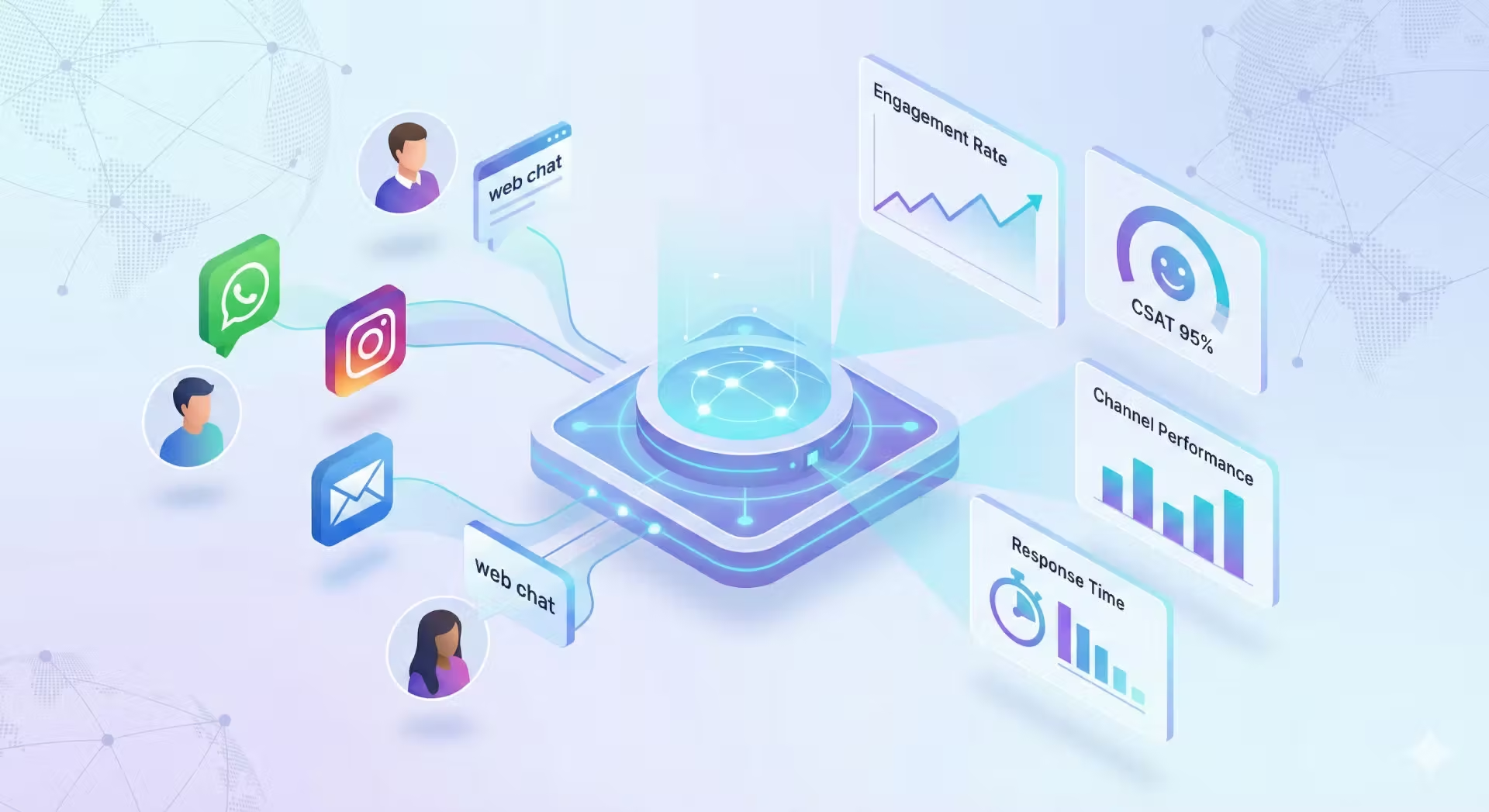In today's fast-paced business world, delivering exceptional customer support is more critical than ever. The only way for businesses not to plateau when it comes to hitting the right moments with customers at the right time and on the right channel is to build the data frameworks that work for you.
When it comes to getting that 5-star satisfaction rating, knowing when to jump on customer insights and behaviour can make all the difference. Cultivating happy, loyal customers means accessing the right data to ensure your customer service teams are hitting the mark in every single conversation.
In this blog post, we will explore the role that reporting and analytics plays in delivering high-quality customer support and how it can drive team efficiency, deliver customer delight, and future-proof your business. No matter the KPIs we want to track, figuring out how to track them is the critical key.
Customer service analytics and reporting
To start, what does "analytics and reporting" mean in customer service? How does it impact both customers and internal teams?
Well, analytics and reporting tools provide a bird's-eye view of your customer support operations. They help you identify where your team is spending their time and whether it aligns with your strategic goals.
Let’s say, for example, you’re not getting enough feedback from customers on how they experience your service, but you know that there are a lot of conversations being handled by your team because they’re overwhelmed by their inbox. By taking a look at metrics such as resolution times or first response time, you can pinpoint if there are any bottlenecks in your workflow and then allocate resources more effectively. This leads to improved team efficiency, as your agents can focus on tasks that truly matter, and opportunities for you to gather the feedback that you’re looking for.
Net Promoter Score (NPS) and Customer Satisfaction (CSAT)
Additionally, analytics and reporting enable you to measure customer happiness by tracking metrics such as Net Promoter Score (NPS) or Customer Satisfaction (CSAT). Hearing directly from customers about their positive and negative experiences, even on a simple numbered scale, provides you with opportunities to gain more knowledge about your service. You can then reach out to particularly affected customers for feedback.
With these insights, you can shift your customer service from a reactive practice to a proactive one. Knowing where to make improvements when it comes to response time or conversation resolution allows you to adapt your ways of working and get ahead of common issues before they arise.
💡 Dutch buy-now, pay-later financial company Billink cut down on response time lost by working from one team inbox, using internal tagging, and utilising a Flowbot to tackles FAQs and saw customer satisfaction jump. Check out their story.
Customer analytics benefits
One of the immediate benefits of robust reporting is the ability to recognise and celebrate your team's achievements. When your support agents see their performance numbers and positive feedback, it boosts morale and motivation. Recognising outstanding performance can also help retain top talent and inspire others to strive for excellence. A happy, high-performing team is a massive advantage, particularly during the busiest time of the years or when you’re bringing on new hires—your senior, experienced staff know where their energy and talent is needed most, thanks to accurate reports.
Of course, let’s not forget that this data doesn’t exist in the bubble of your team. It's a valuable part of your company's larger data ecosystem. Integration with business intelligence systems allows you to combine support data with data from other departments, providing a holistic view of your business. This comprehensive perspective enables informed decision-making and the identification of cross-functional opportunities for improvement.
Filter the customer service data that’ll help you move forward
In customer service analytics, complexity levels can vary wildly. Small businesses with, say, around five employees can often rely on basic tools like spreadsheets to manually track customer interactions and feedback—though this does end up lacking the real-time insights that you get with more complicated software.
In contrast, large corporations with hundreds or even thousands of employees employ sophisticated Business Intelligence (BI) platforms tailored to their specific needs. These platforms integrate data from multiple sources, allowing for that wider—but also more impersonal—overview of the entire business.
In each and every case, big or small business, your data needs to go beyond the page and translate into human action.
Apply your customer service analytics
Reports and analytics give us a view of the past, but it’s exactly this perspective that helps us plan for a more productive future. We should take the lessons we find in our reports and apply them to ways of working that continue to improve both team performance and customers’ experiences.
For example, maybe you noticed that the holiday season, even though it’s the most wonderful time of the year, is also the most stressful time of the year. You have a lot of customer questions coming in and too few support members on staff, but your customer satisfaction rating is the highest it’s ever been because you learned to proactively address FAQs and allocate resources so that conversation quality never suffers. A successful and prepared business knows that the lessons from last year can be the best practices to deploy this year.
CSAT
Keeping this in mind, customer sentiment is ever-changing. What makes customers happy today may not hold true tomorrow. The CSAT report is your weather vane for assessing customer satisfaction, and it equips you with the right insights when it comes to making informed decisions, improving your services, and meeting customer expectations.
Even small tweaks to your support practices can make a huge difference when it comes to boosting that satisfaction rate and attract opportunities you didn’t have access to before. Deploying a CSAT report allows you to assess customer happiness based on multiple parameters, such as rating or channel or even specific support team member, ensuring you have the right view of your business in order to adapt your approach in real time.
Workload management
Data-driven insights also play a crucial role in workload management. If hiring on new talent isn’t in the budget, you can analyse historical support data and anticipate seasonal peaks, allowing you to allocate resources accordingly. This proactive approach prevents burnout among your support team members and ensures consistent service quality even during the busiest times.
Automation
One of your key options to manage workloads now is automation. Automation is a game-changer in modern customer support. Thanks to the arrival of accessible AI, we’re seeing a lot more businesses starting to integrate automations into their customer service processes to predict customer trends and provide personalised support.
With access to comprehensive data, you can identify repetitive and time-consuming tasks and implement automation at the right points in your customer support processes. For example, small Dutch perfume brand Parfumado saw a lot of recurring FAQs coming into their support team and sought to handle them with automation. Their Customer Happiness representatives, working in tandem with automated conversation flows, were able to drop their response times from 24 hours to less than 14 without having to sacrifice quality when interacting with customers.
📚 Interested in learning more about the automation solutions Trengo has to offer? Check out what we’re doing to increase your team’s efficiency while maintaining the same high level of quality your customers are used to here.
Look back to your customer service analytics and reporting to delight customers
Data is not just a tool; it's a strategic advantage in the competitive world of customer service.
The power of analytics and reporting in delivering high-quality customer support cannot be overstated. It empowers your teams to work more efficiently, ensures customer satisfaction, and future-proofs your business.
With Trengo’s new reporting toolset, you can harness the full potential of your customer support data. Let's chat and see how it can transform your customer support operations for the better.




.png)











